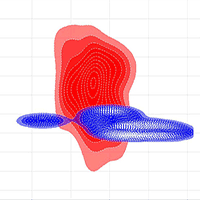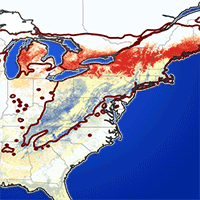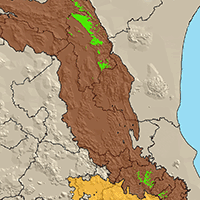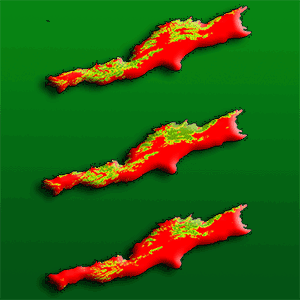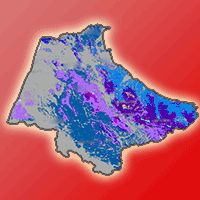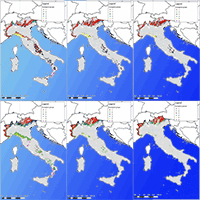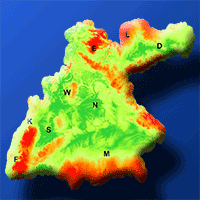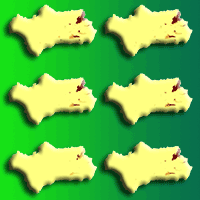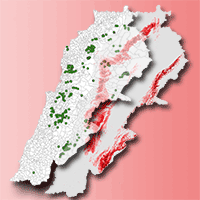
Local ecological niche modelling to provide suitability maps for 27 forest tree species in edge conditions
Jean Stephan (1) , Christelle Bercachy (1), Joseph Bechara (2), Eliane Charbel (2), Javier López-Tirado (3)
iForest - Biogeosciences and Forestry, Volume 13, Issue 3, Pages 230-237 (2020)
doi: https://doi.org/10.3832/ifor3331-013
Published: Jun 19, 2020 - Copyright © 2020 SISEF
Research Articles
Abstract
Ecological Niche Modelling (ENM) portrays the relationship between the actual geographical distribution of a species and the environmental factors that induced this distribution. Yet most models study species over the wider range of their distribution; thus, they are rarely appropriate for forest management and forest restoration on the local scale. This study aims to understand the major environmental factors affecting the distribution of 27 species, through limiting ENM at national level (Lebanon). MaxENT software was used for modelling. Area under the curve (AUC) values showed a very good robustness of the models. Minimal biogeographic and climatic parameters such as elevation, distance from the sea, annual mean precipitation, the average minimum temperature of the coldest month, the average maximum temperature of the warmest month, and Emberger Quotient were sufficient to obtain robust modelling results. Cloud coverage during summer was identified as a novelty factor explaining species distribution at the edge of their range. Composite soil and topography predictors such as Potential Direct Incident Radiation (PDIR) and the Integrated Moisture Index (IMI) were reduced to simple factors such as aspect, slope and available water content, whose contribution was conditioned to higher data resolution. The high number of presence points enabled us to study the range of species distribution gathering them according to their ecological characteristics. The generated reforestation suitability maps and the likelihood of occurrence of each species were achieved to define priority species for conservation and forest management. This information could be useful for decision-makers and foresters.
Keywords
Ecological Niche Modelling, Suitability Maps, Cloud Coverage, Range of Distribution, MaxEnt
Authors’ Info
Authors’ address
Christelle Bercachy
L2GE, Department of Life and Earth Sciences, Faculty of Science, Lebanese University, Fanar (Lebanon)
Integrative Sciences Department, Faculty of Experimental Sciences, University of Huelva, Avda. Tres de Marzo s/n, 21071 Huelva (Spain)
Corresponding author
Paper Info
Citation
Stephan J, Bercachy C, Bechara J, Charbel E, López-Tirado J (2020). Local ecological niche modelling to provide suitability maps for 27 forest tree species in edge conditions. iForest 13: 230-237. - doi: 10.3832/ifor3331-013
Academic Editor
Maurizio Marchi
Paper history
Received: Dec 30, 2019
Accepted: Apr 27, 2020
First online: Jun 19, 2020
Publication Date: Jun 30, 2020
Publication Time: 1.77 months
Copyright Information
© SISEF - The Italian Society of Silviculture and Forest Ecology 2020
Open Access
This article is distributed under the terms of the Creative Commons Attribution-Non Commercial 4.0 International (https://creativecommons.org/licenses/by-nc/4.0/), which permits unrestricted use, distribution, and reproduction in any medium, provided you give appropriate credit to the original author(s) and the source, provide a link to the Creative Commons license, and indicate if changes were made.
Web Metrics
Breakdown by View Type
Article Usage
Total Article Views: 41872
(from publication date up to now)
Breakdown by View Type
HTML Page Views: 34657
Abstract Page Views: 4019
PDF Downloads: 2454
Citation/Reference Downloads: 2
XML Downloads: 740
Web Metrics
Days since publication: 2004
Overall contacts: 41872
Avg. contacts per week: 146.26
Citation Metrics
Article Citations
Article citations are based on data periodically collected from the Clarivate Web of Science web site
(last update: Mar 2025)
Total number of cites (since 2020): 12
Average cites per year: 2.00
Publication Metrics
by Dimensions ©
Articles citing this article
List of the papers citing this article based on CrossRef Cited-by.
References
Flore terrestre etude de la diversité biologique du Liban [Biodiversity study of Lebanon: terrestrial flora]. MOA/PNUE Project GF/6105-92-72 publication, Beirut, Lebanon, pp. 147. [in French]
Gscholar
The Mediterranean region: biological diversity in space and time. Oxford University Press, Oxford, UK, pp. 376.
Gscholar
Flora of Turkey and the East Aegean Islands (11 vols). Edinburgh University Press, Edinburgh, UK, pp. 567.
Gscholar
Novel methods improve prediction of species’ distributions from occurrence data. Ecography 29: 129-151.
CrossRef | Gscholar
Terrain variables used for predictive mapping of vegetation communities in Southern California. In: “Terrain Analysis: Principles and Applications” (Wilson J, Gallant J eds). John Wiley and Sons, New York, USA, pp. 333-353.
Gscholar
Summary for policymakers (Masson-Delmotte V, Zhai, P, Pörtner HO, Roberts D, Skea J, Shukla PR, Pirani A, Moufouma-Okia W, Péan C, Pidcock R, Connors S, Matthews JBR, Chen Y, Zhou X, Gomis MI, Lonnoy E, Maycock T, Tignor M, Waterfield T eds). IPCC Special Report, Geneva, Switzerland.
Online | Gscholar
A high resolution predictive model for relict trees in the Mediterranean-mountain forests (Pinus sylvestris L., P. nigra Arnold and Abies pinsapo Boiss.) from the south of Spain: a reliable management tool for reforestation. Forest Ecology and Management 330: 105-114.
CrossRef | Gscholar
Ecologie et biogéographie des forêts du bassin Méditerranéen [Ecology and biogeography of forests of the Mediterranean basin]. Elsevier, Paris, France, pp. 571. [in French]
Gscholar
Native trees of Lebanon and neighboring countries. Notre Dame University Press, Beirut, Lebanon, pp. 320. [in French]
Gscholar
Illustrated flora of Lebanon. CNRS Editions, Beirut, Lebanon, pp. 608.
Gscholar
Past, present, and future geographic range of an oro-Mediterranean Tertiary relict: the Juniperus drupacea case study. Regional Environmental Change 19: 1507-1520.
CrossRef | Gscholar
Outstanding challenges in the transferability of ecological models. Trends in Ecology and Evolution 33 (10): 790-802.
CrossRef | Gscholar
Flora Palaestinae. The Israel Academy of Sciences and Humanities, Goldberg’s Press, Jerusalem, Israel, pp. 364.
Gscholar

